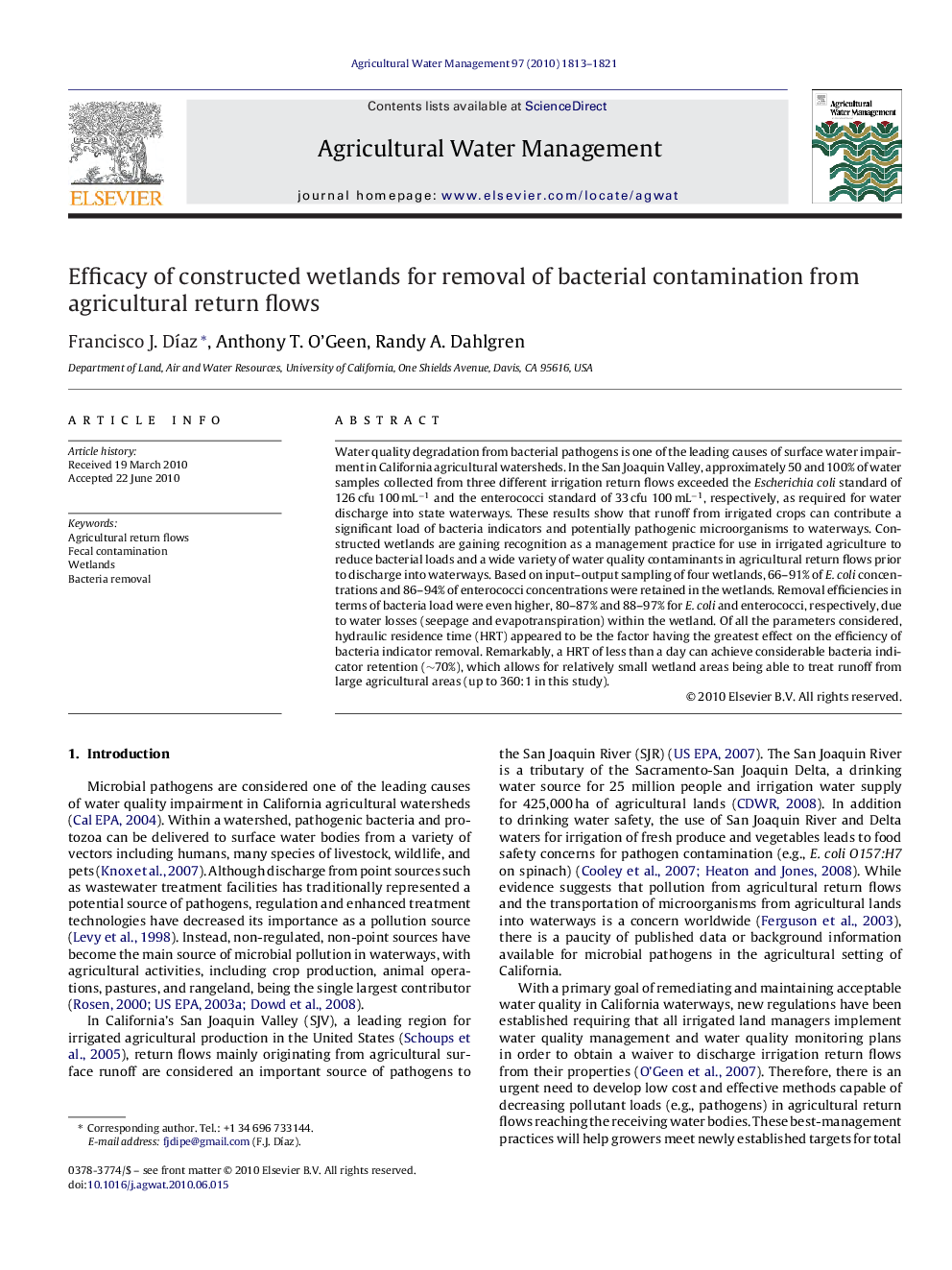| Article ID | Journal | Published Year | Pages | File Type |
|---|---|---|---|---|
| 4479686 | Agricultural Water Management | 2010 | 9 Pages |
Abstract
Water quality degradation from bacterial pathogens is one of the leading causes of surface water impairment in California agricultural watersheds. In the San Joaquin Valley, approximately 50 and 100% of water samples collected from three different irrigation return flows exceeded the Escherichia coli standard of 126Â cfu 100Â mLâ1 and the enterococci standard of 33Â cfu 100Â mLâ1, respectively, as required for water discharge into state waterways. These results show that runoff from irrigated crops can contribute a significant load of bacteria indicators and potentially pathogenic microorganisms to waterways. Constructed wetlands are gaining recognition as a management practice for use in irrigated agriculture to reduce bacterial loads and a wide variety of water quality contaminants in agricultural return flows prior to discharge into waterways. Based on input-output sampling of four wetlands, 66-91% of E. coli concentrations and 86-94% of enterococci concentrations were retained in the wetlands. Removal efficiencies in terms of bacteria load were even higher, 80-87% and 88-97% for E. coli and enterococci, respectively, due to water losses (seepage and evapotranspiration) within the wetland. Of all the parameters considered, hydraulic residence time (HRT) appeared to be the factor having the greatest effect on the efficiency of bacteria indicator removal. Remarkably, a HRT of less than a day can achieve considerable bacteria indicator retention (â¼70%), which allows for relatively small wetland areas being able to treat runoff from large agricultural areas (up to 360:1 in this study).
Related Topics
Life Sciences
Agricultural and Biological Sciences
Agronomy and Crop Science
Authors
Francisco J. DÃaz, Anthony T. O'Geen, Randy A. Dahlgren,
